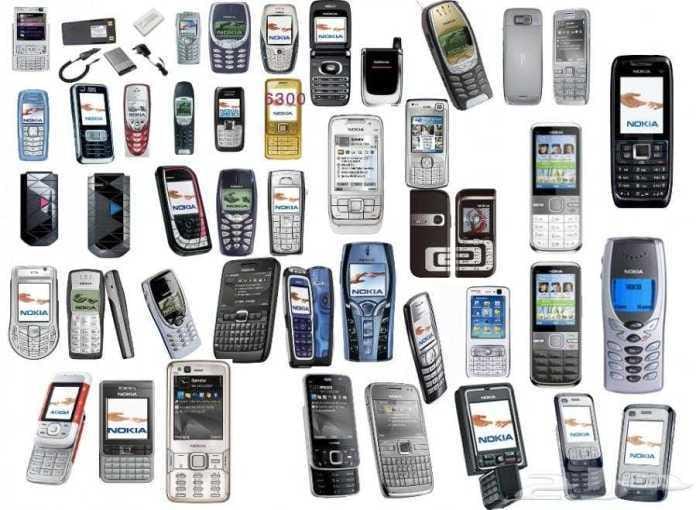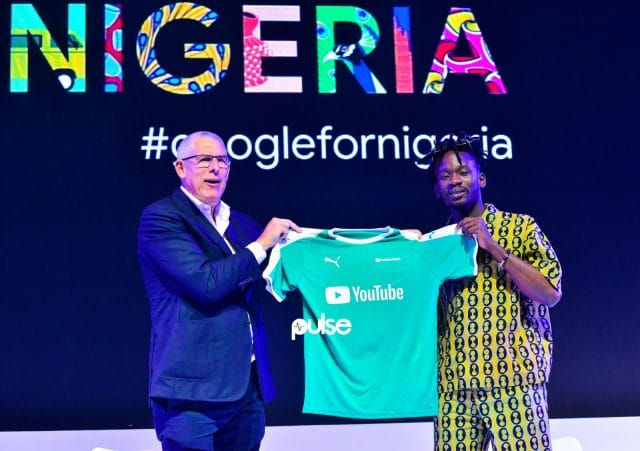Apple Music, Spotify and now YouTube’s plans to expand even further in Africa
We have also seen a spike in distribution wars that’s currently tearing through Nigeria; aiding artists, putting money into the ecosystem and improving the prospects of licensing and sync deals, maybe neighbouring rights as well.
But the streaming front is where things are more interesting. The wars have not just inspired an entrance into the scene by all the major streaming platforms – aside from Pandora and Amazon Music, they have also inspired playlisting, pricing and diversification of sound cadres. Deezer finally changed its pricing from $7.99 to NGN900 within weeks of Spotify’s arrival.
The origins
YouTube has always been in Nigeria. After YouTube launched in 2005, the earliest Nigerian videos entered the YouTube stratosphere around 2008/2009 – most of them were music videos. However, most of those music videos were uploaded by third-party people with know-how.
These ‘ITK YouTube-experts’ would charge artists a hell of a lot of money to help push these videos. As they say, knowledge is power and a lack of it is an unwanted luxury. At the time, the industry was different. The system was pretty much controlled by studios, Alaba Marketers, video directors, TV stations [for music videos] and event promoters.

Artists would record in studios, market to Alaba Promoters who own playlists and DJ mixes as wella s brick and mortar distribution channels, video directors shoot the music videos which are promoted on the TV stations.
The success of this process entices event promoters to invest and take a chance on artists, whose major sources of revenue were live performances and brand deals.
Music blogs abridged that process by heralding the disruptive tendencies of the internet. Alongside slow, unevenly distributed and expensive internet, music blogs also slowed down the growth of YouTube in Nigeria – and the larger Africa. As we came into the last decade, social media picked up with the viral conversations of Twitter and the cool of Instagram.

Blackberry phones also started to get upended by iPhones and Android phones with better USPs and features, that are more suited to premium enjoyment of multimedia content. The QWERTY keys and clunky Blackberry Storm screens were replaced with sleeker designs, better batteries and greater addiction to the internet – even though Blackberry subscriptions were much cheaper.
By extension, music blogs – for the most part – and YouTube were the evangelists for Afrobeats to the world, which connected Lagos to London. From then, YouTube began to load faster on despite adding the 1080p feature in 2009 and added a ‘thumbs up’ feature. Two things that also aided the journey were the launch of Vevo in December 2009 and analytics in November 2011.
By 2012, Nollywood producers started flooding YouTube with their movies, for exposure – even before the payment plan for content creators.
Around the same time, content creators like Mark Angel Comedy, Craze Clown, EmmaOhMyGad started creating content series on YouTube. This turned YouTube into the largest streaming platform in Nigeria – bar none. Africans in diaspora used YouTube to connect with content from home while Nigerians at home used it to stay informed.
By 2014/2015, YouTube had gotten so big that numbers began to get important. Thus, Nigerian artists started buying illegal views to entertain their vanity metrics.
Then media platforms started having their own YouTube pages to curate and create content just as the vlogosphere started to pack heat. Then, some influencers started using YouTube for product reviews and branded content.
By 2017, Alphabet launched YouTube Go in Nigeria and a year later, hired Tuma Basa, a veteran journalist and Spotify’s then-Global Head of Programming as its Director, Black Culture and Music. Basa was born in Congo to a family from Rwanda. He then spent his teenage years in Zimbabwe.

But it was in 2019 that signs of an imminent drive started to show. In July 2019, Mr. Eazi and Lyor Cohen hosted an event to help emerging African artists. It was funny and fishy because Mr. Eazi is huge on ownership, so he wasn’t about to do any exclusive deal for YouTube. He had also launched emPawa by that point.
Around the same time, Cohen who currently serves as the company’s head of music also toured Nigeria’s labels – including MAVIN Records – before boasting about knowing Rema, whom he jokingly referred as “Don Jazzy’s boy” at an event later that evening before dancing to Teni’s music.
That weekend was Basa’s wedding to Ethopian beauty, Abaynesh Jembere. But he still managed to be in Lagos for that event.
In March 2020, YouTube launched YouTube Music and YouTube Premium before launching shorts in 2021.
YouTube’s penetration has also increased. Statistica reports that as regards population in 2020, YouTube had 25.7% penetration in Nigeria, 51.9% in South Africa, 48% in Egypt and 21.3% in Kenya. This means that around 50 million Nigerians used YouTube in 2020.
Why is this important?
As I noted in my article about Spotify and Apple Music, Africa is ripe and the time for harvest will soon be upon us. That’s why every company is planting its seed – sorry… feet – in the sand. The demographic is getting younger, the internet is still expensive but internet penetration is on the rise, consumer behaviour is slowly shifting to become more premium and tech is booming on the continent.
A few months ago, Turntable Charts reported that Davido’s ‘Jowo’ became the first Nigerian song to have one million organic streams from Nigeria within one day. This shattered Beyonce’s five-year record. This also proved an attraction towards local/African content.
Asides from the audio streaming platforms, Netflix, Showmax and – reportedly, Amazon Prime are making inroads into the market with product, attractive offers and disruptive moves in Nigeria/Africa. There are also opportunities in podcasts and documentaries as well as original content formats like talk shows, TV shows and more.
As of 2020, only 20% of YouTube content is music-related and only 5% were music videos. Gaming has the highest with 37%, personal blogs with 21%, Entertainment with 10% and other types of content with 19%.
However, Pex reported that 83% of videos which exceeded one billion views were music-related. It also reported that despite making up just 5% of all content on the platform, music videos accounted for 22% of all YouTube views last year. This means that there is a crazy diversification of content on YouTube, which suits the average internet-savvy Gen Z African.
What is YouTube trying to become?

YouTube is positioning itself as an integrated content flywheel in Africa, we just don’t realize it yet.
If streaming platforms are trying to abridge music creation, distribution channels, points of sale/retail and then revenue distribution to displace record labels, YouTube is trying to become a one-stop shop for all things entertainment/content-related without making it obvious.
And it’s positioning itself to truly take over the African market by leveraging the existent popularity, brand equity and brand trust of YouTube Main. The company is trying to become a flywheel of all things entertainment-related. The only real thing it currently lacks is a gaming-related product like Roblox or Twitch to complete the flywheel.
As things stand, an average YouTube user can easily switch between YouTube Premium, YouTube and YouTube Music. With YouTube Premium, a user can play ‘music in the background when the app is minimized.’ You can also consume creator-content, entertainment content, explainers, documentaries and podcast content.
YouTube’s integration is also smoother and less tacky than the earliest days of post-reel Instagram as well as being more visually appealing than Facebook Watch. The moment YouTube can figure out a way to seamlessly integrate YouTube TV, a gaming feature and find a way to successfully integrate podcasting, it will become the best internet-based content product for Africa.
Already, the YouTube Premium/YouTube Music integration as well as YouTube Music’s feature which allows a user to watch music videos is proving to be a masterstroke. If YouTube is able to provide film, music, music videos, podcasts, news, short-form videos, documentaries and more for just $9.99 or NGN900, then this will be a truly disruptive product.
In 2020, I wrote about the saturation vs. affordability that streaming poses to customers. I also suggested that a content aggregation model might work, if all the streaming/content platforms [like New York Times] can create a product that allows users to pick what they want and pay a reduced fee.
YouTube seems to have hacked the process by integrating its offering into a service. It might also be better served to rethink YouTube Gaming, which it closed in 2019. But for Africa, that might not be important yet – gaming hasn’t really taken off.
Already, YouTube Live is gaining momentum in Africa. During the lockdown, artists like Asa and Wurld performed on YouTube’s Stay At Home concerts. Wizkid also did A Day In Live to raucous reception.
The best part of this for YouTube is its interaction potential with comments, mentions, likes and dislikes. The next phase for streaming is in-app interaction.
Ads vs. Payment to creatives
In Q3 2021, YouTube generated $5bn from ads. In Q2 2021, YouTube reportedly generated $3m per hour on ads and $75m in daily revenue. Music Business Worldwide reported that YouTube made $7.002 billion from advertising alone – equivalent to approximately $77 million per day or $3.2 million per hour.
YouTube Music is also reported to currently have 8% of the global market. While YouTube claimed to have paid the music industry $4bn in the last 12 months, it’s the larger creative industry that needs to be addressed. Currently, YouTube stands to generate healthier ad revenue from Africa as more people want their products to be viewed on YouTube’s ads.
Even Africa’s music industries are exploring TrueView more consistently. In East Africa, YouTube has also found a haven with cheaper internet, young demographic and rising internet penetration. In essence, East Africa could be YouTube’s Latin America in Africa – in terms of numbers.
The payment to Nigerian creatives isn’t as healthy and TikTok and Facebook Watch are pouncing with greater urgency and offers to creators. With its ad revenue, it would be nice if African creatives got increased payment possibilities.
YouTube Shorts and partnerships
Shorts launched in 2020 with a beta phase in India. Now, it’s here but its direction is slightly confusing even though it’s necessary for YouTube. The product currently seems more like a teaser platform, than a social media page. Its marketing strategy should also be less celebrity-led and more mass market-centric.
Influencer economy will also benefit from this dawn. Already, TikTok influencers are making a killing, but Shorts could upend TikTok in terms of making millionaires by leveraging on brand equity. TikTok and Reels are cool, but YouTube has far greater equity.
In 2020, certain overzealous commentators argued that TikTok was the antithesis to YouTube after Bytedance’s cash cow hit two billion downloads. People argued that TikTok was more Gen Z tailored than YouTube. People also positioned TikTok as where entertainment meets social media and they were right.
However, shortening attention spans don’t just render YouTube videos too long. Several research platforms have shown that what makes YouTube great is being everybody’s first point of call when they need a video – including TikTok content. Simply put, YouTube is one of the world’s largest search engines and one of the world’s biggest encyclopedias.
Both platforms can coexist. But YouTube has gone a step further to incorporate social media into a service by way of Shorts and its earmarked $100m to pay creators who use the feature. It’s integration into YouTube’s mobile apps make sense, but the content isn’t really attractive yet. Right now, it’s looking more like Vskit than TikTok, lacking a clear identity – but it’s still early days.
The potential of Shorts for Africa transcends just social media short-form videos, it goes into Nollywood, influencer content and other things. If YouTube is smart, Shorts shouldn’t just be a hashtag platform for #challenge culture, even though that will push it faster than anything.
Over the past few months, YouTube’s Nigerian office has been hiring – especially for a lot of partnerships roles. This indicates that it’s trying to execute a diverse range of content via third-party creators, in a way that could influence all its integrated products. And it’s perfectly-timed.
What YouTube should really look into is acquiring/licensing content like Spotify. One of those formats is podcasts. Although Africa’s industry is only in infancy, projections over the next five years suggest that Africa’s podcast industry will experience a boom – especially with the advent of internet radio.
